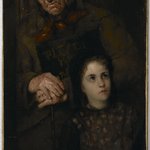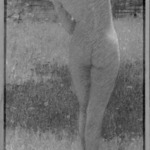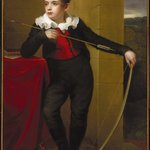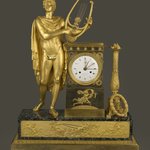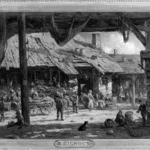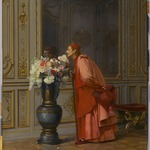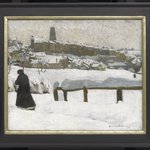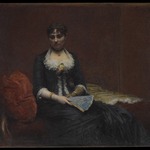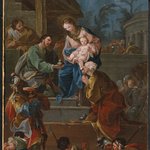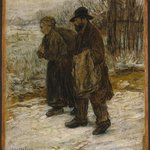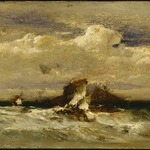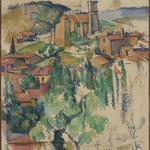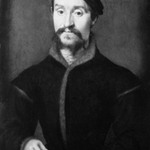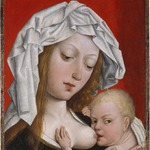I was really drawn in by the realistic eyes of the woman in the painting! When reading the description below the painting, it says that many French artists drew inspiration from the social instability of the time. Is this just an assumption made by historians about this piece? How do art historians make these connections?

Many art historians are also well-versed on the history of the time that they study and I think the comments in that label were inspired by the fact that the artist had to flee France for England during the revolution but longed to return (he eventually returned to France after and exhibited at the Paris Salon). Art historians also base their research on things like artist diaries or letters, contemporary reviews, and general social criticism from the time to get a feel for what an artist's motivation was.
What is happening in this painting?

This young lady has wandered too far in the countryside, perhaps separated from her party of nature-seekers, and finds herself caught in a dark storm. Frightened and tearful, she seeks shelter from the battering winds under a sturdy oak tree. Féréol de Bonnemaison painted this picture just after the French Revolution, a time of great social upheaval, so it's thought to be symbolic of the national mood. The young girl is dressed in white, the traditional color of Innocence, and might therefore represent the innocent victims of the Revolution. She might also represent France itself since she wears the colors of Le Tricolore, the new republican flag: red (a ribbon in her hair), white (her Greek inspired dress), and blue (her flowing shawl).
Honey, you got a big storm coming. You could stop at five or six stores, or just one.

It seems little late for her to stopping at any stores! I think she's stuck under that tree for the duration. the artist painted this just after the French revolution, a time of great social upheaval. The painting is thought to be symbolic of the national mood. Her white dress, the traditional color of innocence, might represent the innocent victims of the revolution. She might also represent France itself since she wears the colors of the new republican flag. Red (a hair ribbon), white (her greek inspired dress), and blue (her flowing shawl.)
What is this about? Did this really happen?

Bonnemaison's "Young Woman Overtaken by a Storm," was painted from the artist's imagination. He may have worked with a real model to get the pose correct for the woman, but she would have posed in a studio not in the stormy woods. This woman may represent the innocent victims of the storm of the French Revolution.
I'm frightened for her.

The title of this work describes perfectly what's going on here, "Young Woman Overtaken by a Storm." This young lady has wandered to far in the countryside.
Frightened and tearful, she seeks shelter under an oak tree. The artist painted this just after the French Revolution, a period of social upheaval. This painting is thought to be symbolic of the national mood at the time.
Some think she represents France itself since she wears the colors of Le Tricolore, the new republican flag: red, white, and blue.
What conflict does this painting mean to represent?

This painting is from 1799, France while it was destabilized by revolution.
The War of Second Coalition started in 1798, where European Monarchies waged war on revolutionary France. It sprouted from the increasing desire among European royals to restore the French Monarchy, and in doing so continue to legitimize monarchy as a governmental structure.
By this time, French revolutionaries had deposed and executed King Louis XVI and Queen Marie Antoinette. You may have heard of Maximilien Robespierre and his Reign of Terror that took place in 1789. This was many waves of instability during the revolutionary period that lasted until 1799.
I see! I imagine that the woman represented the general mood of the time perhaps.
Exactly! the image is an allegory for the state of France following the revolution!
Tell me more.
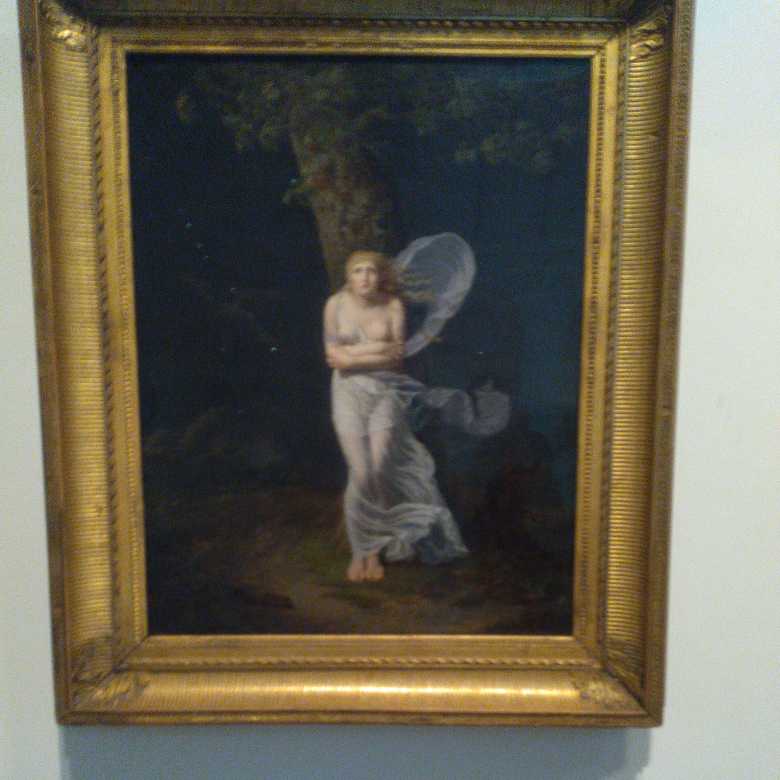
This painting was made just after the French Revolution, a period of social upheaval. This painting is thought to be symbolic of the national mood at the time.
The young woman, often a symbol of innocence, represents France itself and the innocent victims of the Revolution since she wears the colors of Le Tricolore, the new republican flag: red, white, and blue!
Many visitors remark that looking at this painting makes them feel cold!
This was me last night.

It was all of us weathering the nor'easter!
This was actually painted just after the French Revolution, a time of great social upheaval, so it's thought to be symbolic of the national mood.
The young girl is dressed in white, the traditional color of innocence and might therefore represents the innocent victims of the Revolution.
She might also represent France itself. The clothes she's wearing (the white dress, red ribbon in her hair, and blue flowing shawl) are the colors of the Le Tricolore, the new Republican flag.

















